Blog
John Arthur “Jaki” Byard ( June 15, 1922 – February 11, 1999) was an American jazzmulti-instrumentalist, composer, and arranger. Mainly a pianist, he also played tenor and alto saxophones, among several other instruments. He was known for his eclectic style, incorporating everything from ragtimeand stride to free jazz.
Byard played with trumpeter Maynard Ferguson in the late 1950s and early 1960s, and was a member of bands led by bassist Charles Mingus for several years, including on several studio and concert recordings. The first of his recordings as a leader was in 1960, but, despite being praised by critics, his albums and performances did not gain him much wider attention. In his 60-year career, Byard recorded at least 35 albums as leader, and more than 50 as a sideman. Byard’s influence on the music comes from his combining of musical styles during performance, and his parallel career in teaching.
From 1969 Byard was heavily involved in jazz education: he began teaching at the New England Conservatory of Music and went on to work at several other music institutions, as well as having private students. He continued performing and recording, mainly in solo and small group settings, but he also led two big bands – one made up of some of his students, and the other of professional musicians. His death, from a single gunshot while in his home, remains an unsolved mystery.
Byard was born in Worcester, Massachusetts, on June 15, 1922. At that time, his parents – John Sr and Geraldine Garr – were living at 47 Clayton Street. Both of his parents played musical instruments; his mother played the piano, as did his uncles and grandmother, the last playing in cinemas during the silent film era. He began piano lessons at the age of six, but they ended when his family was affected by the Great Depression. He was also given a trumpet that belonged to his father, and attempted to copy the popular players of the time, Roy Eldridge and Walter Fuller.
more...Erroll Louis Garner (June 15, 1921 – January 2, 1977) was an American jazz pianist and composer known for his swing playing and ballads. His instrumental ballad “Misty“, his best-known composition, has become a jazz standard. It was first recorded in 1956 with Mitch Miller and his orchestra, and played a prominent part in the 1971 motion picture Play Misty for Me.
Scott Yanow of Allmusic calls him “one of the most distinctive of all pianists” and a “brilliant virtuoso”.Garner received a star on the Hollywood Walk of Fame at 6363 Hollywood Boulevard. His live album Concert by the Sea first released in 1955, sold more than 1 million copies by 1958, and Yanow’s opinion on the album is that it “made such a strong impression that Garner was considered immortal from then on.”
Garner was born, along with twin brother Ernest in Pittsburgh, Pennsylvania on June 15, 1921, the youngest of six children. He attended George Westinghouse High School (as did fellow pianists Billy Strayhorn and Ahmad Jamal). Interviews with his family, music teachers, other musicians, and a detailed family tree can be found in Erroll Garner: The Most Happy Piano by James M. Doran.
more...PERFORMANCE DAY featuring the REDEMPTION DREAMERS percussion ensemble with Valencia Barnes singing Rivers of Babylon dressed in blue. The last in a series of the Rhythm Roots Workshop Residency at Cerenity Humboldt Senior Care center in St Paul. (https://cerenityseniorcare.org/cerenity-senior-care…/). 9th and FINAL in a series of 9 workshops exploring cultural rhythms from an array of world traditions. Wednesday June 14th 2023 130-3pm
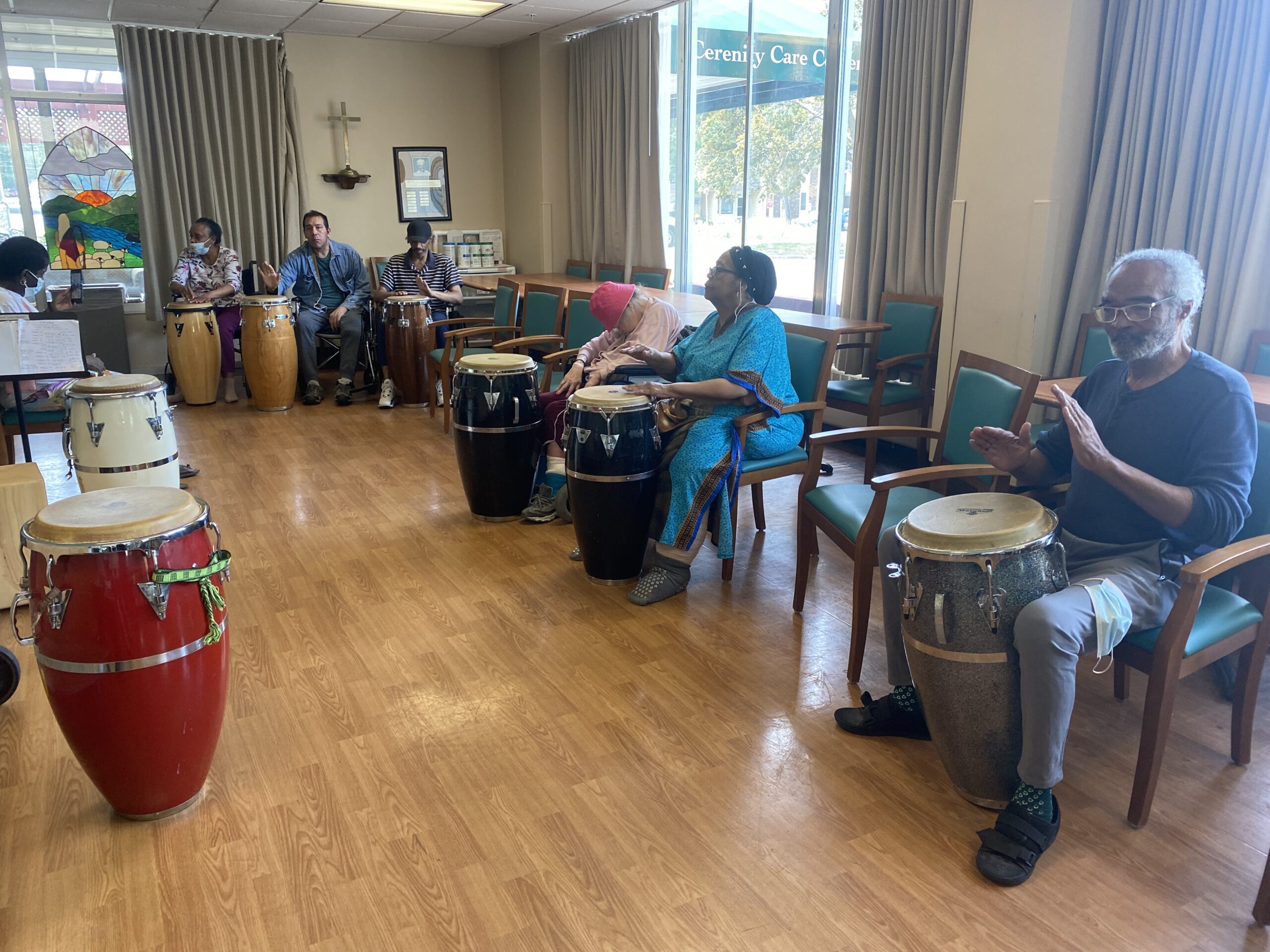
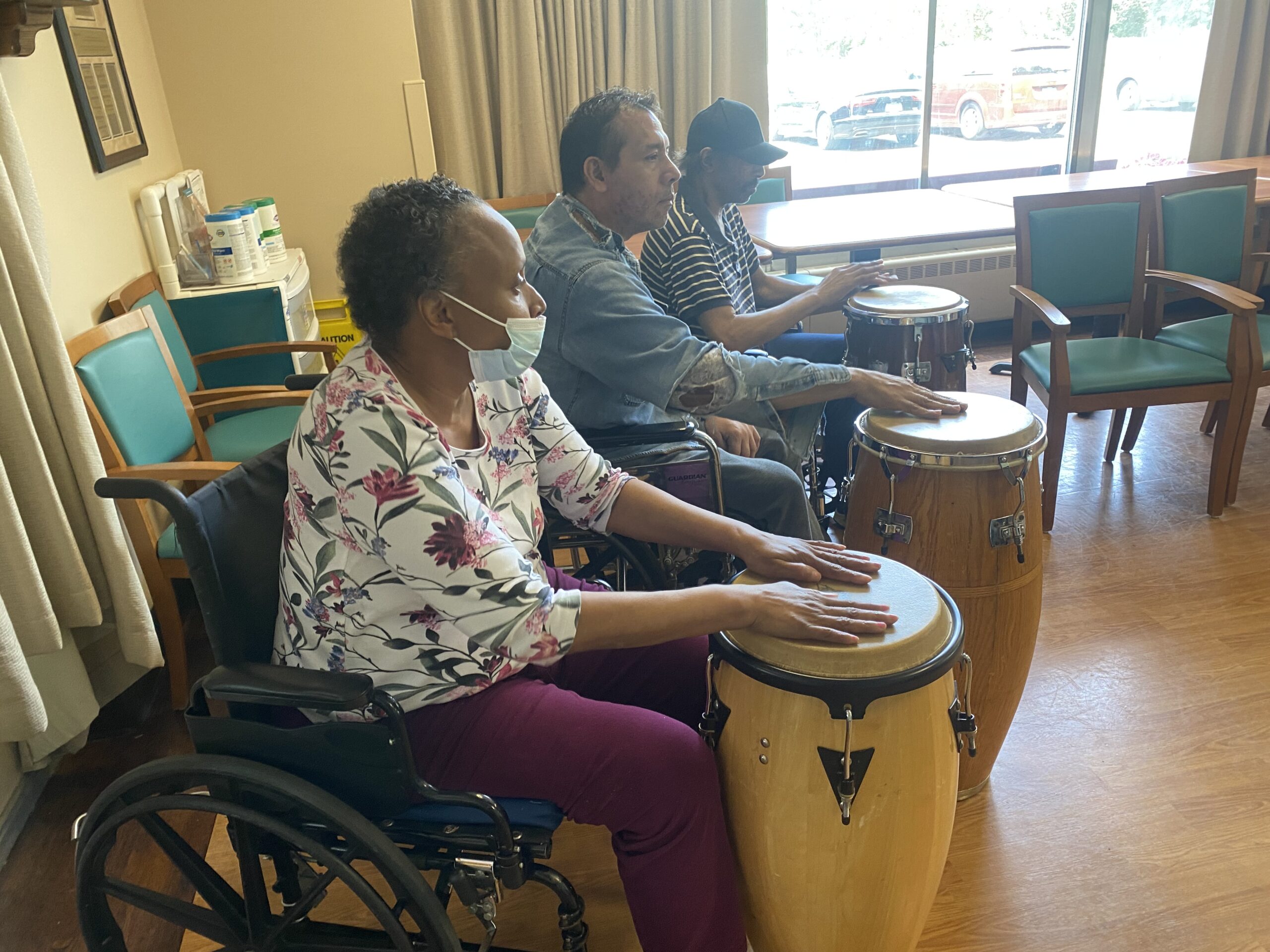
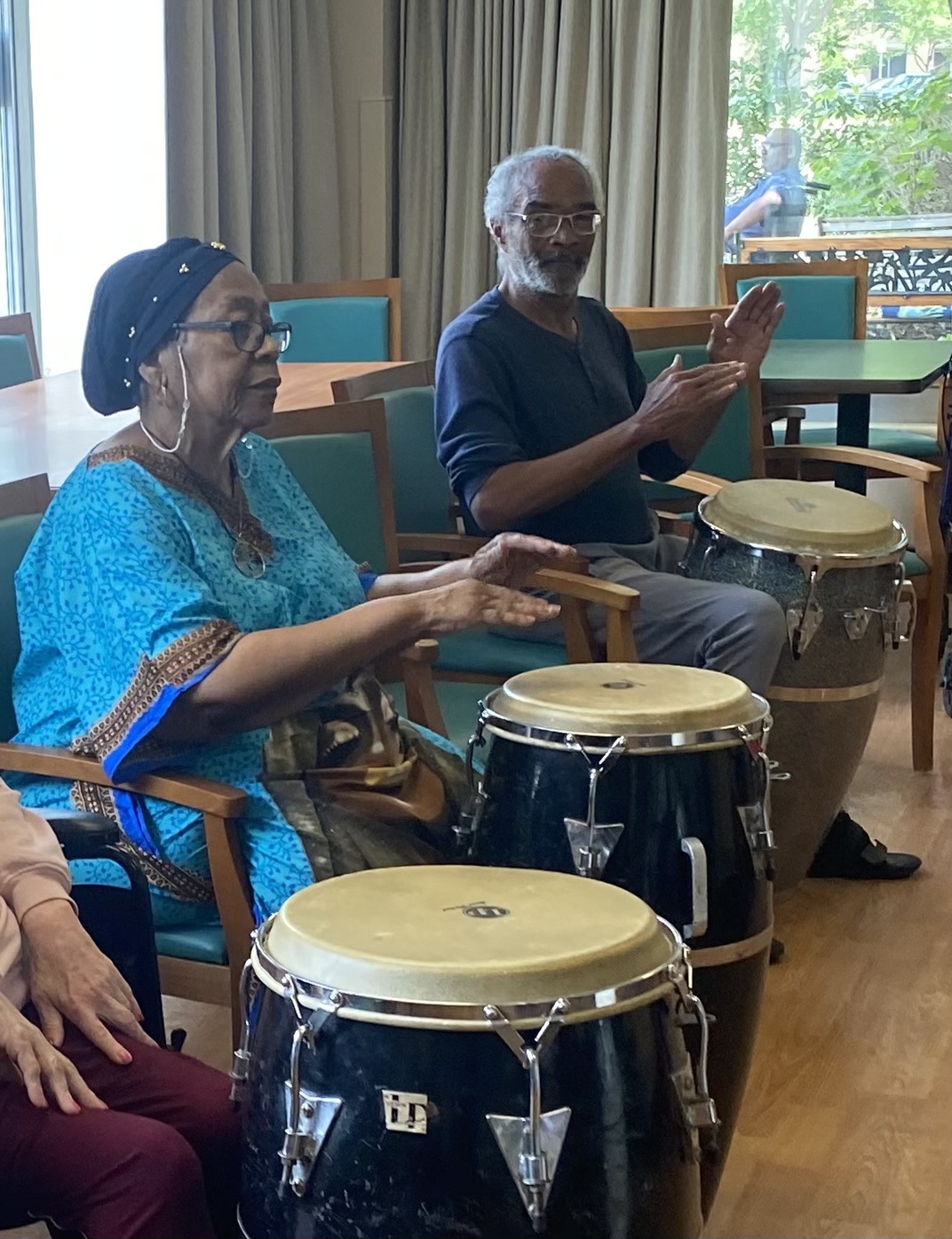
the Shark nebula. This predator apparition poses us no danger as it is composed only of interstellar gas and dust. Dark dust like that featured here is somewhat like cigarette smoke and created in the cool atmospheres of giant stars. After being expelled with gas and gravitationally recondensing, massive stars may carve intricate structures into their birth cloud using their high energy light and fast stellar winds as sculpting tools. The heat they generate evaporates the murky molecular cloud as well as causing ambient hydrogen gas to disperse and glow red. During disintegration, we humans can enjoy imagining these great clouds as common icons, like we do for water clouds on Earth. Including smaller dust nebulae such as Lynds Dark Nebula 1235 and Van den Bergh 149 & 150, the Shark nebula spans about 15 light years and lies about 650 light years away toward the constellation of the King of Aethiopia (Cepheus).
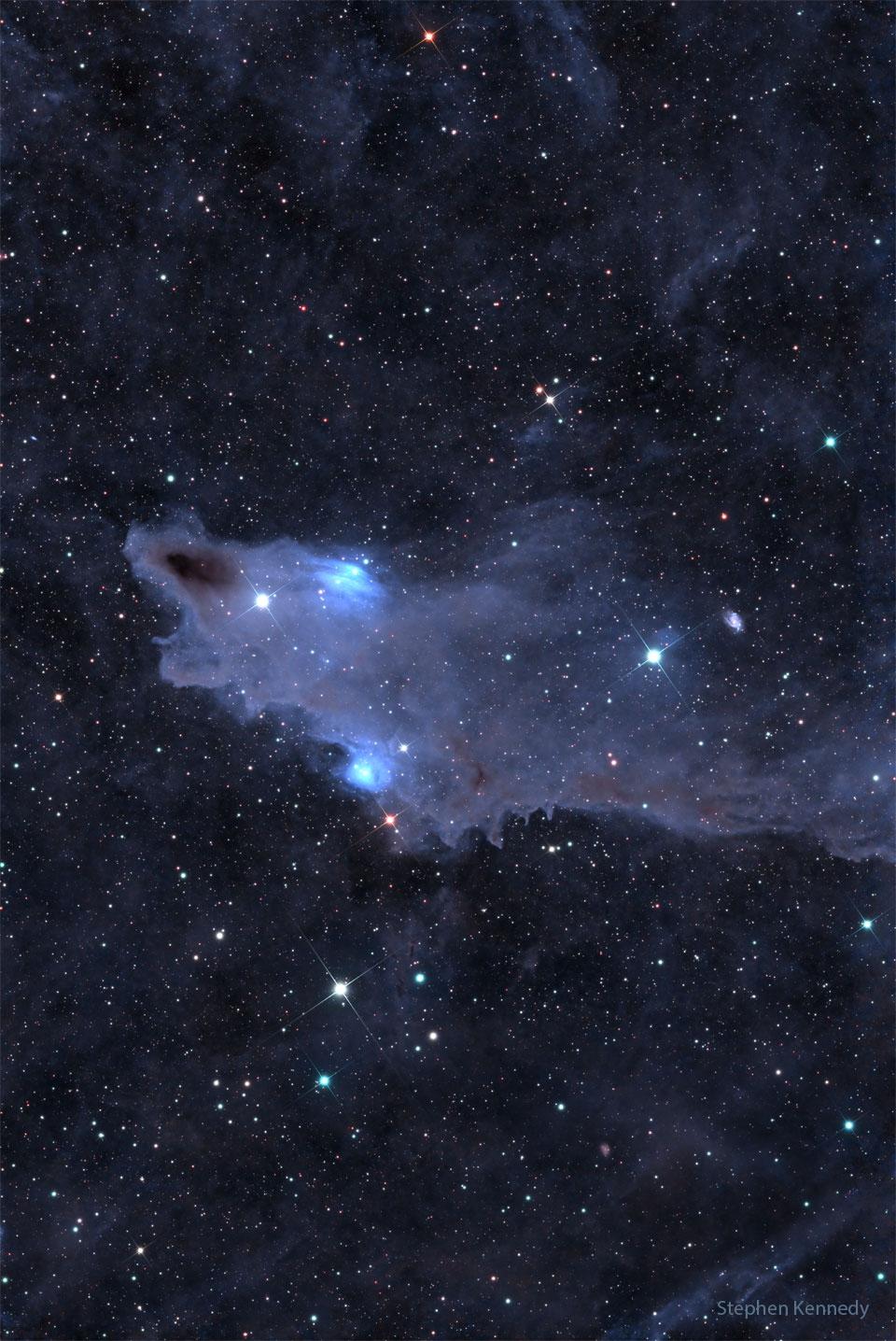
William Henry Marcus Miller Jr. (born June 14, 1959) is an American musician, songwriter, and record producer. He is best known for his work as a bassist. He has worked with trumpeter Miles Davis, pianist Herbie Hancock, singer Luther Vandross, and saxophonist David Sanborn, among others. He was the main songwriter and producer on three of Davis’ albums: Tutu (1986), Music from Siesta (1987), and Amandla (1989). His collaboration with Vandross was especially close; he co-produced and served as the arranger for most of Vandross’ albums, and he and Vandross co-wrote many of Vandross’ songs, including the hits “I Really Didn’t Mean It“, “Any Love“, “Power of Love/Love Power” and “Don’t Want to Be a Fool“. He also co-wrote the 1988 single “Da Butt” for Experience Unlimited.
William Henry Marcus Miller Jr. was born in the Brooklyn borough of New York City on June 14, 1959. He grew up in a musical family; his father, William Miller, was a church organist and choir director. Through his father, he is the cousin of jazz pianist Wynton Kelly. He became classically trained as a clarinetist and later learned to play keyboards, saxophone, and guitar.
more...Jules Shungu Wembadio Pene Kikumba (14 June 1949 – 24 April 2016), known professionally as Papa Wemba , was a Congolese singer and musician who played Congolese rumba, soukous, and ndombolo. Dubbed the “King of Rumba Rock”, he was one of the most popular musicians of his time in Africa and played an important role in world music. He was also a fashion icon who popularized the Sape look and style through his musical group Viva la Musica, with whom he performed on stages throughout the world.
Papa Wemba’s road to fame and prominence began when he joined the music group Zaiko Langa Langa in the late 1960s. This was followed by his success as a founding member both of Isifi Lokole and then Yoka Lokole, along with a short stint as a member of Afrisa International for a few months. During these early stages of his career, he was establishing a style that included traditional Congolese rumba and soukous, infused with traditional African sounds, Caribbean rhythms, rock and soul. But Wemba gained international success and status with his band Viva La Musica, especially after he took them to Paris, France in the early 1980s. It was there that Wemba was able to achieve more of an “eclectic sound” in his work, influenced by western popular music that reflected a European flavor and style, referred to as “Europop.
more...Rodney Terence Argent (born 14 June 1945) is an English musician. In a career spanning more than 50 years, Argent came to prominence in the mid-1960s as the keyboardist, founder and leader of the rock band the Zombies, and went on to form the band Argent after the first break-up of the Zombies.
Argent is one of the main composers of the Zombies’ music and made major lyrical contributions to the band’s songs. As the band’s keyboardist he used a variety of instruments, including Hohner Pianet, Mellotron, harpsichord, and organ.
In addition to his work with the Zombies and Argent, Argent has made music for television series, been a session musician, produced albums by other artists, and had a solo career which has included three studio albums: Moving Home, Red House, and Classically Speaking. Argent was inducted into the Rock and Roll Hall of Fame as a member of the Zombies in Brooklyn in March 2019.
more...Autry DeWalt Mixon Jr. (June 14, 1931 – November 23, 1995), known professionally as Junior Walker, was an American multi-instrumentalist (primarily saxophonist) and vocalist who recorded for Motown during the 1960s. He also performed as a session and live-performing saxophonist with the band Foreigner during the 1980s.
Walker was born Autry DeWalt Mixon Jr. on June 14, 1931, in Blytheville, Arkansas, but grew up in South Bend, Indiana. He began playing saxophone while in high school, and his saxophone style was the anchor for the sound of the bands he later played in.
His career started when he developed his own band in the mid-1950s as the Jumping Jacks. His longtime friend and drummer Billy Nicks (1935–2017) formed his own group, the Rhythm Rockers. Periodically, Nicks would sit in on Jumping Jack’s shows, and Walker would sit in on the Rhythm Rockers shows.
more...Messier 83 or M83, also known as the Southern Pinwheel Galaxy and NGC 5236, is a barred spiral galaxy approximately 15 million light-years away in the constellation borders of Hydra and Centaurus. Nicolas-Louis de Lacaille discovered M83 on 23 February 1752 at the Cape of Good Hope. Charles Messier added it to his catalogue of nebulous objects (now known as the Messier Catalogue) in March 1781.
It is one of the closest and brightest barred spiral galaxies in the sky, and is visible with binoculars. It has an isophotal diameter at about 36.24 kiloparsecs (118,000 light-years). Its nickname of the Southern Pinwheel derives from its resemblance to the Pinwheel Galaxy (M101).
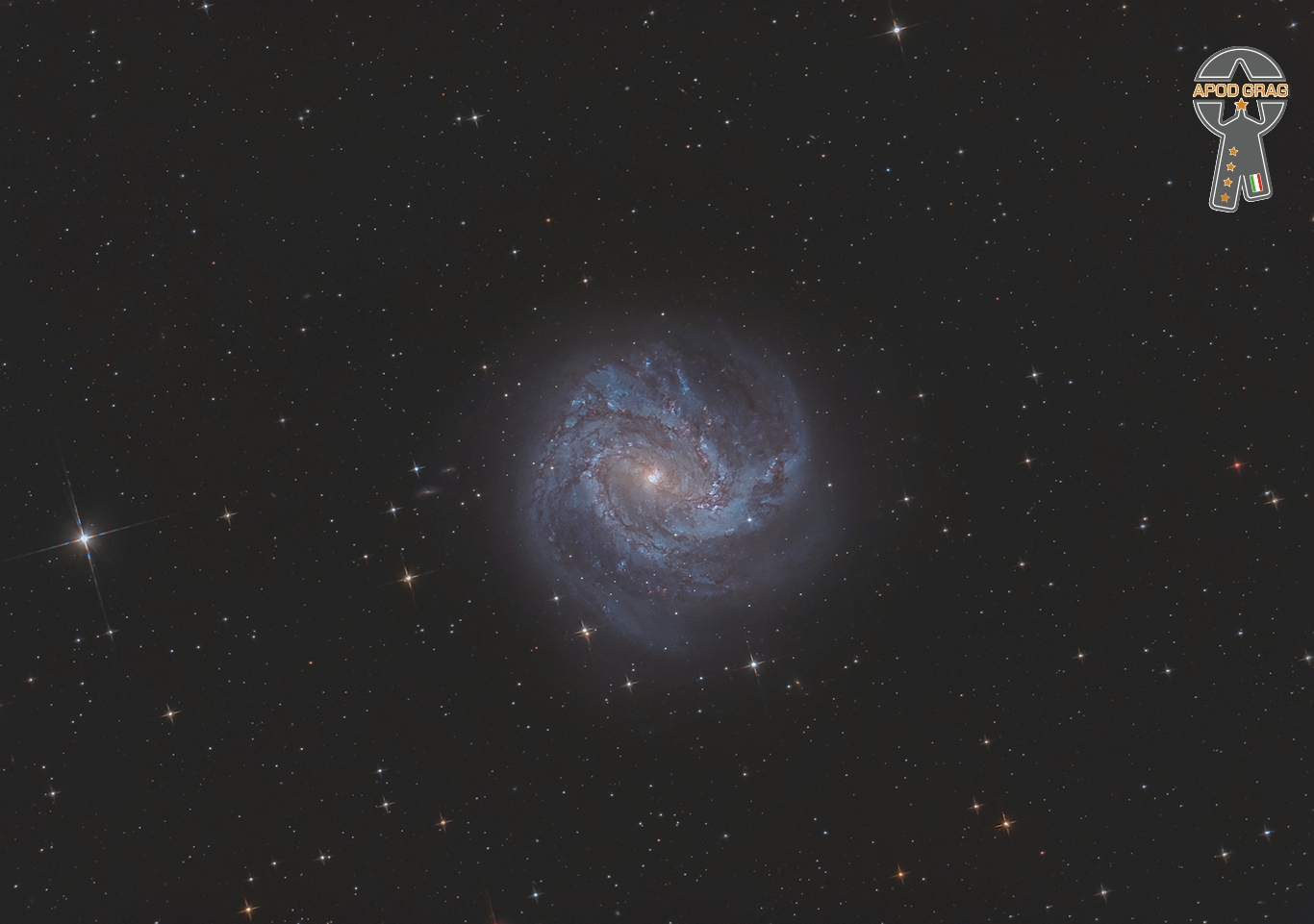
Uriel Jones (June 13, 1934 – March 24, 2009) was an American musician. Jones was a recording session drummer for Motown‘s in-house studio band, the Funk Brothers, during the 1960s and early 1970s.
Jones was first hired by Motown as a fill-in for principal drummer Benny Benjamin; along with Richard “Pistol” Allen, he moved up the line as recordings increased and Benjamin’s health deteriorated. Hits that Jones played drums on include “Ain’t No Mountain High Enough” – both versions, by Marvin Gaye & Tammi Terrellin 1967 and the 1970 remake by Diana Ross, “I Heard It Through the Grapevine” and “Ain’t That Peculiar” by Marvin Gaye, “Cloud Nine” (in which he was augmented by Spider Webb), “I Can’t Get Next to You“, and “Ain’t Too Proud to Beg” by the Temptations, “What Becomes of the Brokenhearted” by Jimmy Ruffin, Jr. Walker‘s “Home Cookin’,” “The Tracks of My Tears” and “I Second That Emotion” by Smokey Robinson & the Miracles, and “For Once in My Life” by Stevie Wonder. His influences included jazz drummer Art Blakey. For his Motown recordings, Jones performed on a studio set composed of Ludwig, Slingerland, Rogers and Gretsch components and possibly Zildjian cymbals. Jones became better known to music fans through his appearance in the feature documentary film, Standing in the Shadows of Motown. Motown arranger Paul Riser said of Jones that “Uriel’s drum sound was the most open and laid-back, and he was the funkiest of the three guys we had…He had a mixed feel and did a lot of different things well.”
more...Adolphus Anthony Cheatham, better known as Doc Cheatham (June 13, 1905 – June 2, 1997), was an American jazz trumpeter, singer, and bandleader. He is also the grandfather of musician Theo Croker.
Doc Cheatham was born in Nashville, Tennessee, United States, of African, Cherokee and Choctaw heritage. He noted there was no jazz music there in his youth; like many in the United States he was introduced to the style by early recordings and touring groups at the end of the 1910s. He abandoned his family’s plans for him to be a pharmacist (although retaining the medically inspired nickname “Doc”) to play music, initially playing soprano and tenor saxophone in addition to trumpet, in Nashville’s African American Vaudeville theater. Cheatham later toured in band accompanying blues singers on the Theater Owners Booking Association circuit. His early jazz influences included Henry Busse and Johnny Dunn, but when he moved to Chicago in 1924, he heard King Oliver. Oliver’s playing was a revelation to Cheatham. Cheatham followed him around. Oliver gave young Cheatham a mute, which Cheatham treasured and performed with for the rest of his career. A further revelation came the following year when Louis Armstrong returned to Chicago. Armstrong would be a lifelong influence on Cheatham, describing him as “an ordinary-extraordinary man.”
more...William M. “Wild Bill” Moore (June 13, 1918 – August 1, 1983) was an American R&B and jazz tenor saxophone player. Moore earned a modest hit on the Hot R&B charts with “We’re Gonna Rock, We’re Gonna Roll”, which also was one of the earliest rock and roll records according to some sources.
Moore was born in Detroit Michigan and began playing the alto saxophone at an early age. However, prior to his musical career, he was an amateur boxer, winning Michigan’s Golden Gloves light heavyweight championship in 1937, before briefly turning professional. By the early 1940s, Moore abandoned his boxing career in favor of music, and was inspired by musicians Chu Berry and Illinois Jacquet to switch to tenor saxophone. In 1944, he made his recording debut, accompanying Christine Chatman, the wife of Memphis Slim, for Decca Records. Between 1945 and 1947, Moore was performing and recording in Los Angeles with Slim Gaillard, Jack McVea, Big Joe Turner, Dexter Gordon, and played on Helen Humes’ hit recording, “Be-Baba-Leba”.
more...Attila Cornelius Zoller (June 13, 1927 – January 25, 1998) was a Hungarian jazz guitarist. After World War II, he escaped the Soviet takeover of Hungary by fleeing through the mountains on foot into Austria. In 1959, he moved to the U.S., where he spent the rest of his life as a musician and teacher.
Zoller was born in Visegrád, Hungary. As a child, he learned violin from his father, a professional violinist.While in school, he played flugelhorn and bass before choosing guitar. He dropped out of school and played in jazz clubs in Budapest while Russia occupied Hungary. He fled Hungary in 1948 as the Soviet Union was establishing communist military rule. He escaped on foot, carrying his guitar through the mountains into Austria. He settled in Vienna, became an Austrian citizen, and started a jazz group with accordionist Vera Auer.
more...The galaxy NGC 7292 billows across this image from the NASA/ESA Hubble Space Telescope, accompanied by a handful of bright stars and the indistinct smudges of extremely distant galaxies in the background. It lies around 44 million light-years from Earth in the constellation Pegasus. This slightly dishevelled galaxy is irregular, meaning that it lacks the distinct spiral arms of galaxies like the Whirlpool Galaxy or the smooth elliptical shape of galaxies like Messier 59. Unusually, its core is stretched out into a distinct bar, a feature seen in many spiral galaxies. Alongside its hazy shape, NGC 7292 is remarkably faint. As a result, astronomers classify NGC 7292 as a low surface brightness galaxy, barely distinguishable against the backdrop of the night sky. Such galaxies are typically dominated by gas and dark matter rather than stars. Astronomers directed Hubble to inspect NGC 7292 during an observational campaign studying the aftermath of Type II supernovae. These colossal explosions happen when a massive star collapses and then violently rebounds in a catastrophic explosion that tears the star apart. Astronomers hope to learn more about the diversity of Type II supernovae they have observed by scrutinising the aftermath and remaining nearby stars of a large sample of historical Type II supernovae. NGC 7292’s supernova was observed in 1964 and accordingly given the identifier SN 1964H. Studying the stellar neighbourhood of SN 1964H helps astronomers estimate the initial mass of the star that went supernova, and could uncover surviving stellar companions that once shared a system with the star that would become SN 1964H. [Image Description: A galaxy fills up most of the frame from the right. It is fuzzy and diffuse, but made up of numerous tiny stars. In the core, the stars merge into a glowing bar shape. The gas and stars in the galaxy vary between warm and cool colours. They are spread over a large area, the colours mixing like clouds. The glow of the galaxy fades into a black background, with a few stars and small, distant galaxies.]

More Posts
- Naughty or Nice
- Cosmos NGC 7727
- Christopher Parkening
- Phineas Newborn Jr.
- Cecil Payne
- Clark Terry
- World Music Sauljaljui
- Daily Roots Roots Radics
- John Trudell Being Human
- Friday the 13th 2024
- Cosmos M51
- Joe Messina
- Ben Tucker
- Sonny Greer
- Daily Roots Scientist
- Flamenco Fridays Carlos Montoya
- Graffiti Human Suffering
- Dr Who Facts
- Cosmos M45
- Alex Acuña